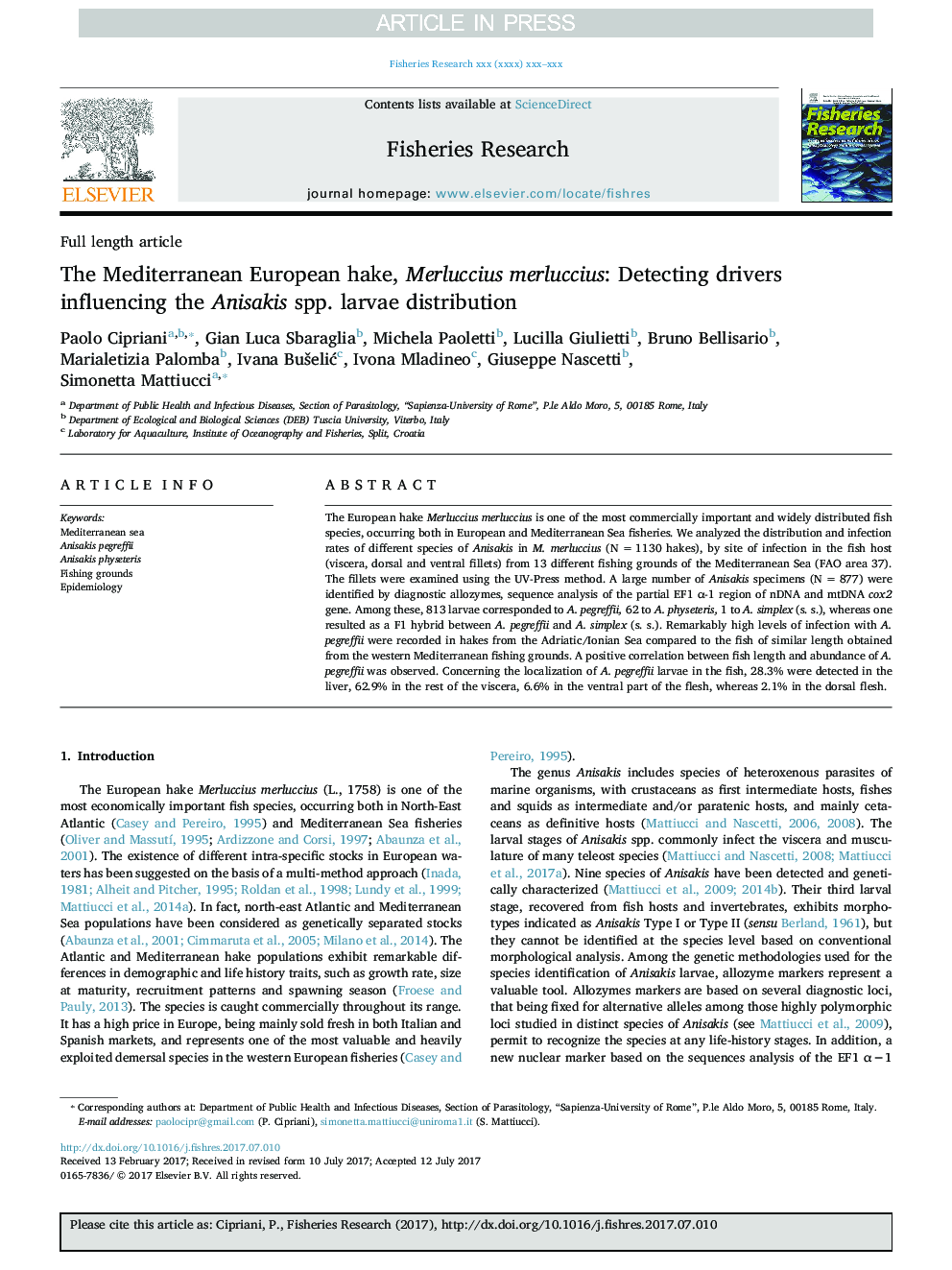| Article ID | Journal | Published Year | Pages | File Type |
|---|---|---|---|---|
| 8885472 | Fisheries Research | 2018 | 11 Pages |
Abstract
The European hake Merluccius merluccius is one of the most commercially important and widely distributed fish species, occurring both in European and Mediterranean Sea fisheries. We analyzed the distribution and infection rates of different species of Anisakis in M. merluccius (N = 1130 hakes), by site of infection in the fish host (viscera, dorsal and ventral fillets) from 13 different fishing grounds of the Mediterranean Sea (FAO area 37). The fillets were examined using the UV-Press method. A large number of Anisakis specimens (N = 877) were identified by diagnostic allozymes, sequence analysis of the partial EF1 α-1 region of nDNA and mtDNA cox2 gene. Among these, 813 larvae corresponded to A. pegreffii, 62 to A. physeteris, 1 to A. simplex (s. s.), whereas one resulted as a F1 hybrid between A. pegreffii and A. simplex (s. s.). Remarkably high levels of infection with A. pegreffii were recorded in hakes from the Adriatic/Ionian Sea compared to the fish of similar length obtained from the western Mediterranean fishing grounds. A positive correlation between fish length and abundance of A. pegreffii was observed. Concerning the localization of A. pegreffii larvae in the fish, 28.3% were detected in the liver, 62.9% in the rest of the viscera, 6.6% in the ventral part of the flesh, whereas 2.1% in the dorsal flesh.
Related Topics
Life Sciences
Agricultural and Biological Sciences
Aquatic Science
Authors
Paolo Cipriani, Gian Luca Sbaraglia, Michela Paoletti, Lucilla Giulietti, Bruno Bellisario, Marialetizia Palomba, Ivana BuÅ¡eliÄ, Ivona Mladineo, Giuseppe Nascetti, Simonetta Mattiucci,
